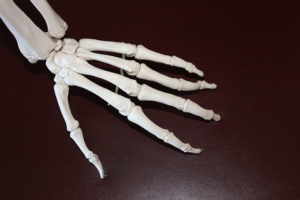Questionnaire May Identify Patients at Risk for Rheumatoid Arthritis – Rheumatology Advisor
Using the Symptoms in Persons At Risk of Rheumatoid Arthritis (SPARRA) questionnaire in relatives of patients with RA, symmetrical and small joint pain was associated with RA seropositivity and elevated C-reactive protein (CRP) and may be useful indicators of RA risk, according to study fin…….

Using the Symptoms in Persons At Risk of Rheumatoid Arthritis (SPARRA) questionnaire in relatives of patients with RA, symmetrical and small joint pain was associated with RA seropositivity and elevated C-reactive protein (CRP) and may be useful indicators of RA risk, according to study findings published in Arthritis Research & Therapy.
The SPARRA questionnaire was developed to collect self-reported information about joint symptoms in people at risk for RA. This cross-sectional study used the SPARRA questionnaire to identify symptoms in patients who were seropositive or had elevated C-reactive protein levels and to determine whether the questionnaire can be used to identify those who may be at risk for RA.
The study population included first-degree relatives of patients with RA. They were selected because of their fourfold higher risk for developing RA. Participants were asked to complete a baseline questionnaire and the SPARRA questionnaire and agree to a blood draw. Blood analyses included testing for seropositivity (defined as RF ³ 20 U/ml and/or anti-cyclic citrullinated peptide [anti-CCP] ³ 7 U/ml) and CRP (high CRP was defined as ³ 5 mg/L).
Continue Reading
Of 870 participants for whom all data was available, 43 were seropositive and 122 had elevated CRP. Commonly reported symptoms included sleep disturbances (20.3%), joint pain (17.9%), fatigue (16.7%) and distress (16.1%). Symmetrical and small joint pain was higher in those who were seropositive (11.3% and 12.8%, respectively) and had elevated CRP (11.5% and 10.7%, respectively). Seropositivity, older age, and feeling depressed were associated with symmetrical and small joint pain.
Limitations of the study included an inability to determine dependent or causal relationships due to the cross-sectional design, inability to recall patients who were found to be seropositive for further clinical assessment, and a low response rate to the SPARRA survey.
The researchers concluded, “This study of [first degree relatives] of patients with RA found that symmetrical and small joint pain was associated with antibody positivity and higher levels of inflammation in the blood, which may be an indicator of people who may be at higher risk of developing RA.”
Source
Costello RE, Humphreys JH, Sergeant JC, et al. Symptoms in first-degree relatives of patients with rheumatoid arthritis: evaluation of cross-sectional data from the symptoms in persons at risk of rheumatoid arthritis (SPARRA) questionnaire in the Preclinical EValuation of Novel Targets in RA (PREVeNT-RA) cohort. Arthritis Research & Therapy. Published online August 11, 2021. doi:10.1186/s13075-021-02593-w.







